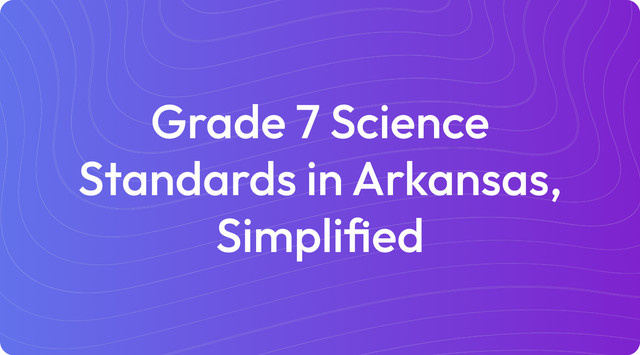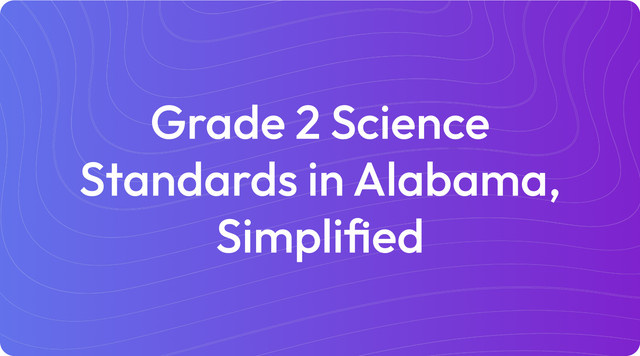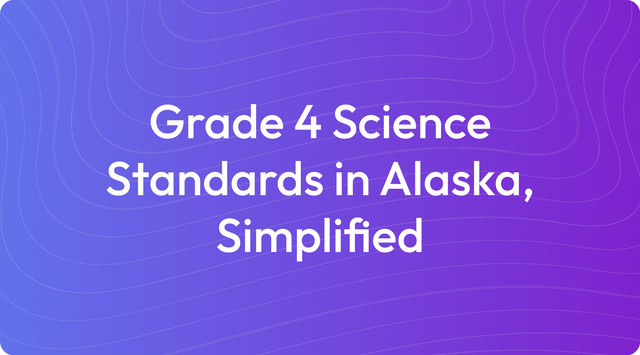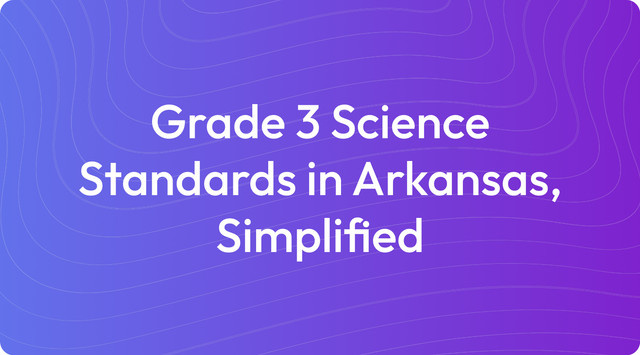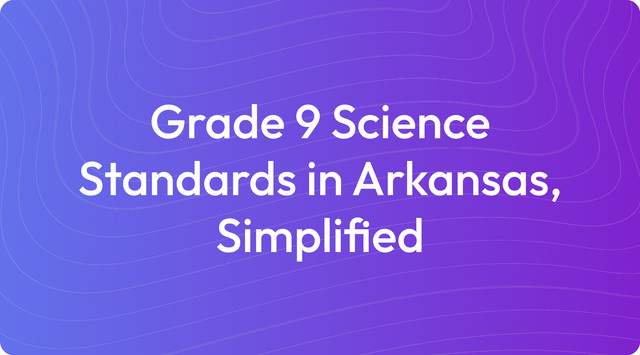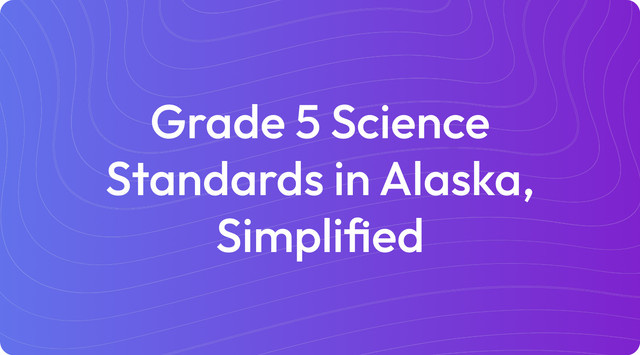Grade 10 Science Standards in California, Simplified
California’s Grade 10 science explores biology and ecosystems. Discover more—read on TeachShare!
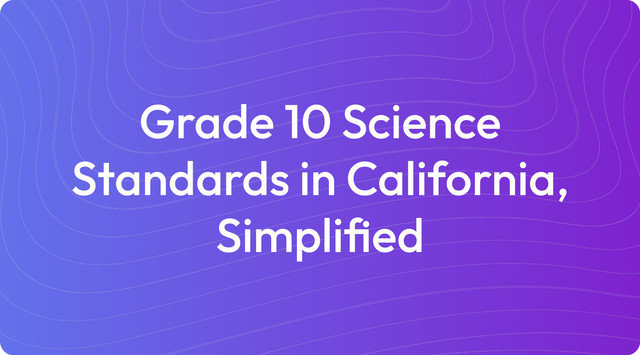
We understand that applying state standards can be a complex part of curriculum planning. To help you, we've simplified the California Next Generation Science Standards (CA NGSS) for Grade 10, breaking them down into key areas and example activities. Our goal is to provide a practical guide to the core learning expectations for your students.
Education standards are learning goals that outline what students should know and be able to do at each grade level. As a teacher, you are expected to use these standards to guide instruction, but you have the flexibility to decide how to teach the material. For example, a Grade 10 California science standard requires students to use a model to describe climate changes, giving you a clear target for your lesson while allowing you to choose the specific activity.
What Are Grade 10 Science Standards in California?
The Grade 10 Science Standards in California, based on the California Next Generation Science Standards (CA NGSS), are organized into four core scientific disciplines. This structure helps prepare students for advanced science courses and shows them how to apply scientific principles to real-world situations. Here is a breakdown of the key areas and standards:
1. Physical Science (PS): Matter, Energy, and Forces
- PS1: Matter and Its Interactions
- Key Standard (HS-PS1-7): Use mathematical representations to support the claim that atoms, and therefore mass, are conserved during a chemical reaction.
- Key Standard (HS-PS1-4): Develop a model to illustrate energy changes during chemical reactions (endothermic and exothermic).
- PS2: Motion and Stability
- Key Standard (HS-PS2-1): Analyze data to support the claim that Newton’s second law of motion describes the mathematical relationship among force, mass, and acceleration.
- PS3: Energy
- Key Standard (HS-PS3-2): Develop and use models to illustrate how energy is transferred and conserved in systems.
2. Life Science (LS): Genetic Principles and Ecosystem Dynamics
- LS3: Heredity
- Key Standard (HS-LS3-3): Apply concepts of statistics and probability to explain the variation and distribution of traits in a population.
- LS4: Biological Evolution
- Key Standard (HS-LS4-1): Communicate scientific information that common ancestry and biological evolution are supported by multiple lines of evidence.
- LS2: Ecosystems
- Key Standard (HS-LS2-7): Design, evaluate, and refine a solution for reducing the impacts of human activities on ecosystems.
3. Earth & Space Science (ESS): Earth’s Systems and Climate
- ESS2: Earth’s Systems
- Key Standard (HS-ESS2-4): Use a model to describe how variations in the flow of energy into and out of Earth’s systems result in changes in climate.
- ESS3: Earth and Human Activity
- Key Standard (HS-ESS3-3): Develop a quantitative model to describe the relationships among Earth’s systems modified by human activity (e.g., deforestation, urbanization).
4. Engineering Design (ETS): Problem-Solving
- ETS1: Engineering Design
- Key Standard (HS-ETS1-2): Design and evaluate solutions to complex real-world problems by considering constraints and trade-offs.
Key Crosscutting Concepts (CCCs)
Here are the key crosscutting concepts that connect these domains:
- Energy and Matter: Understanding the conservation of mass and energy in physical, chemical, and biological systems
- Cause and Effect: Analyzing how changes in one part of a system affect the whole (e.g., human impact on climate)
- Systems and Models: Using models to represent and predict interactions within systems (e.g., energy flow or ecosystem dynamics)
The framework for these standards is guided by the NGSS topic arrangements and the California content standards.
Key Tested Standards
The key tested standards for Grade 10 science, aligned with the CA NGSS, assess a student's ability to apply scientific principles, analyze data, and solve real-world problems across the core disciplines. Here is a breakdown of the standards that are most frequently assessed:
1. Physical Science (PS): Matter, Energy, and Forces
- HS-PS1-2: Chemical Reactions
Construct and revise explanations for how atoms rearrange during chemical reactions, supported by evidence.
Example: Students analyze chemical equations and experiments to show how reactants form products. - HS-PS1-4: Energy in Chemical Reactions
Develop models to illustrate energy changes (endothermic and exothermic) during chemical reactions.
Example: Students investigate heat release or absorption in reactions, such as combustion or dissolving salts. - HS-PS3-2: Energy Transfer and Conservation
Develop and use models to illustrate how energy is transferred and conserved in systems.
Example: Students model energy changes in a pendulum or roller coaster system. - HS-PS2-1: Newton’s Second Law
Analyze data to support the claim that Newton’s second law describes the relationship among force, mass, and acceleration.
Example: Students conduct experiments with ramps and carts to investigate how force and mass affect acceleration.
2. Life Science (LS): Genetics, Ecosystems, and Evolution
- HS-LS3-3: Genetics and Variation
Apply concepts of probability to explain how traits are inherited and distributed in populations.
Example: Students use Punnett squares to predict inheritance patterns and analyze genetic variation in populations. - HS-LS4-1: Evidence for Evolution
Communicate scientific information that supports common ancestry and biological evolution through multiple lines of evidence.
Example: Students analyze fossil records, anatomical structures, and DNA to support claims about evolution. - HS-LS2-7: Human Impact on Ecosystems
Design, evaluate, and refine solutions to reduce human impacts on ecosystems.
Example: Students design solutions to reduce pollution, conserve water, or restore habitats.
3. Earth and Space Science (ESS): Earth’s Systems and Climate
- HS-ESS2-4: Energy Flow and Climate Systems
Use models to describe how energy flow into and out of Earth’s systems causes climate changes.
Example: Students investigate how greenhouse gases affect global temperatures. - HS-ESS3-3: Human Activity and Earth’s Systems
Use quantitative models to describe how human activity modifies Earth’s systems (e.g., deforestation, urbanization).
Example: Students analyze data on deforestation or carbon emissions and propose solutions to reduce the impact.
4. Engineering, Technology, and Applications of Science (ETS): Problem Solving
- HS-ETS1-2: Designing Solutions
Design and evaluate solutions to real-world problems by considering constraints, trade-offs, and criteria for success.
Example: Students design and test prototypes for renewable energy projects, such as wind turbines or solar panels.
Why These Standards Are Key for Testing
- Analyze Data: For example, graphing data on forces, climate change, or genetic variation
- Develop and Use Models: For example, creating models of chemical reactions, energy systems, or ecosystems
- Construct Evidence-Based Explanations: For example, explaining the role of feedback mechanisms in homeostasis or the impact of human activities on Earth’s systems
- Design Solutions: For example, developing methods to conserve resources or reduce human impact on ecosystems
Source: NGSS topic arrangements
Source: California content standards
Example Learning Objectives for Unit Planning
Learning objectives are clear, specific statements that describe what students will be able to do at the end of a lesson or unit. They act as a roadmap for both you and your students, ensuring everyone is focused on the same learning goals. These objectives translate the broader standards into actionable, measurable outcomes for your classroom.
Here are examples of learning objectives for two key Grade 10 Science standards, written in student-friendly language to support your unit planning:
Standard: HS-PS1-4
Develop a model to illustrate energy changes during chemical reactions such as endothermic and exothermic processes.
- I can describe the difference between endothermic and exothermic reactions by observing how energy is absorbed or released.
- I can create a model (e.g., graph or diagram) to show energy changes during chemical reactions.
- I can explain how energy is conserved in a chemical reaction, even if it changes form.
- I can use experimental evidence to determine whether a chemical reaction is endothermic or exothermic.
Standard: HS-LS3-3
Apply concepts of probability to explain the variation and distribution of traits in a population.
- I can explain how genetic variation occurs through processes like mutation and recombination.
- I can use Punnett squares and probability to predict how traits are passed from parents to offspring.
- I can analyze data to determine how environmental factors influence the distribution of traits in a population.
- I can describe how genetic diversity helps populations adapt to changes in their environment.
Key Changes & Updates
The Grade 10 Science Standards, aligned with the California Next Generation Science Standards (CA NGSS), mark a significant shift in science education. The new approach moves away from rote memorization and toward a more hands-on, practical model. This is centered on what's known as three-dimensional learning, which weaves together core scientific ideas, cross-disciplinary concepts, and the actual practices of scientists and engineers—like asking questions and analyzing data.
This updated framework encourages you to ground your lessons in real-world phenomena, making science more relevant and engaging for students. There is a greater focus on inquiry-based learning, where students conduct investigations, use evidence to build arguments, and design solutions to practical problems. By integrating engineering, math, and literacy skills, these standards help students develop the critical thinking needed for advanced courses and future STEM careers.
Create with TeachShare
We know that translating these standards into engaging classroom materials takes time and effort. Our platform is designed to support you by making it easier to build high-quality, standards-aligned resources quickly, so you can focus more on teaching. Start creating standards-aligned instructional resources with TeachShare now.
Frequently Asked Questions
1. What are the main topics covered in Grade 10 Science?
Grade 10 science, guided by the NGSS framework, centers on four primary areas of study:
- Physical Science: Exploring chemical reactions, energy conservation, and the principles of motion.
- Life Science: Covering heredity, DNA, evolution, and the impact of humans on ecosystems.
- Earth and Space Science: Investigating Earth’s systems, climate patterns, and the effects of human activity.
- Engineering Design: Applying scientific knowledge to create and improve solutions for practical problems.
2. What makes the NGSS different from previous science standards?
The Next Generation Science Standards (NGSS) represent a significant shift from older standards by emphasizing:
- Three-Dimensional Learning: This approach integrates Science and Engineering Practices (SEPs), Crosscutting Concepts (CCCs), and Disciplinary Core Ideas (DCIs).
- Hands-On Investigations: Students are encouraged to actively learn through experiments and modeling rather than passive observation.
- Real-World Applications: Lessons are designed to connect scientific concepts to everyday phenomena, like climate change or ecosystem dynamics.
- Engineering Design: It incorporates engineering principles, challenging students to design solutions for real-world issues.
3. What are examples of activities aligned to Grade 10 standards?
Here are a few examples of classroom activities that align with Grade 10 standards:
- Investigating Chemical Reactions: Students can explore energy changes in chemical processes to understand the difference between endothermic and exothermic reactions.
- Designing Energy Devices: A project could involve building a simple wind turbine or solar panel to see energy transformation in action.
- Predicting Genetic Traits: Using tools like Punnett squares, students can calculate the probability of inheriting specific traits.
- Modeling Climate Change: Students can create models that demonstrate how greenhouse gases influence Earth's climate.
- Solving Environmental Problems: A project might challenge students to design a practical solution for reducing human impact on a local ecosystem, such as a water conservation plan.
4. How do these standards connect to real-world applications?
The NGSS framework is built to show students how science applies directly to their lives and the world around them. For example, it helps them understand:
- How energy conservation principles work in everyday systems like cars and power grids.
- The ways ecosystems react to changes, whether from natural events or human activity.
- The process of designing effective solutions to reduce our impact on natural resources.
5. How do these standards prepare students for future science learning?
These standards build a strong foundation for future learning and careers by developing key skills, including:
- Critical Thinking: Students learn to analyze data, build arguments from evidence, and explain scientific phenomena.
- STEM Preparation: The curriculum provides the foundational knowledge needed for advanced high school science courses and future careers in STEM fields.
- Systems Thinking: Students gain an appreciation for how complex systems—from ecosystems to chemical reactions—interact and change.
Answer


